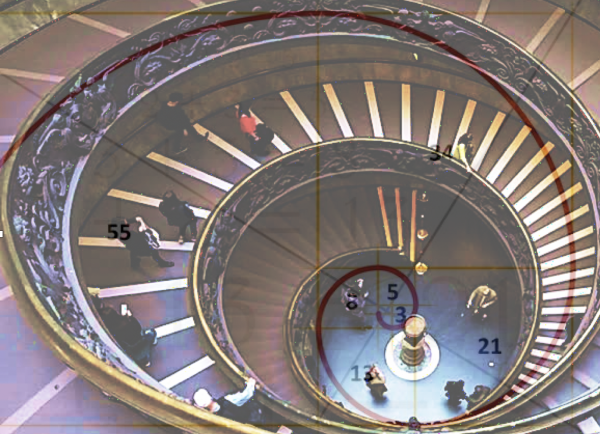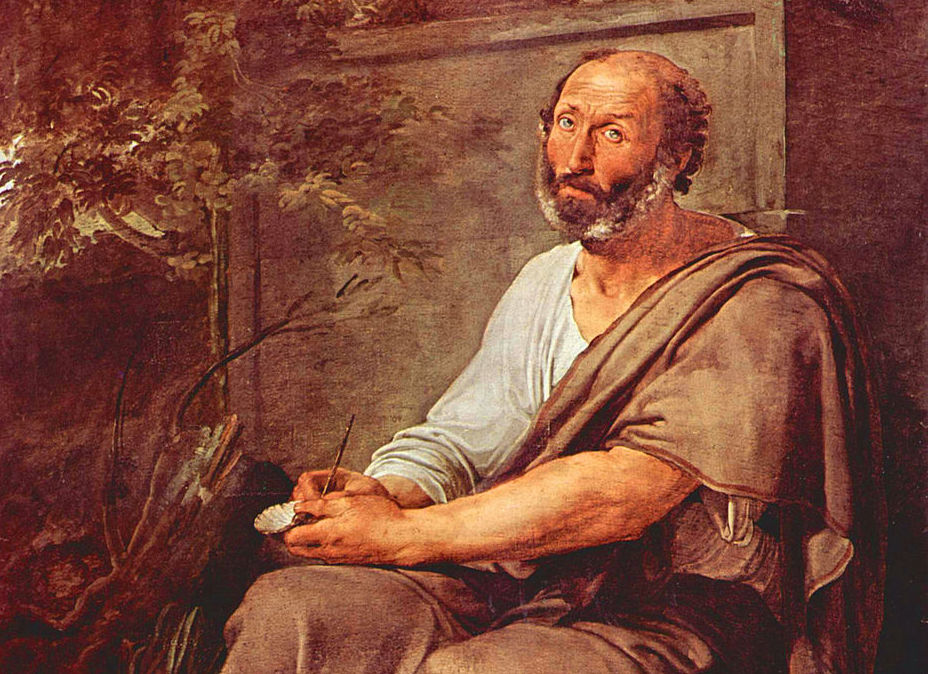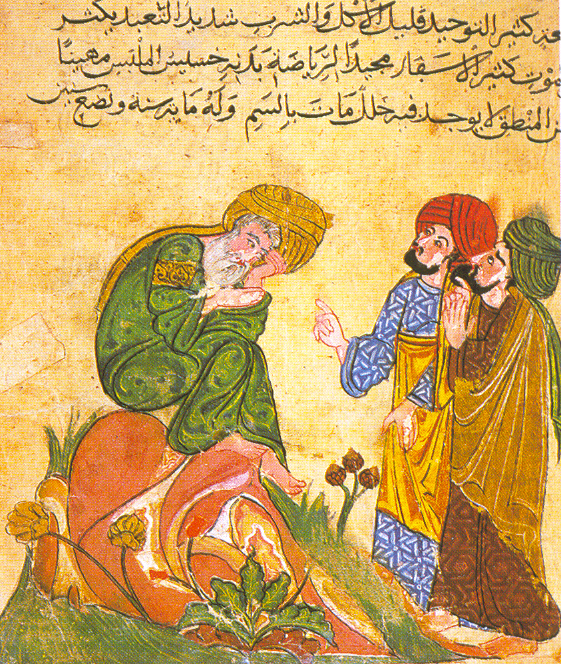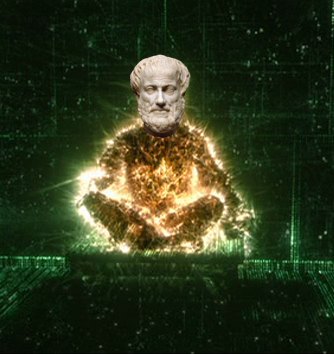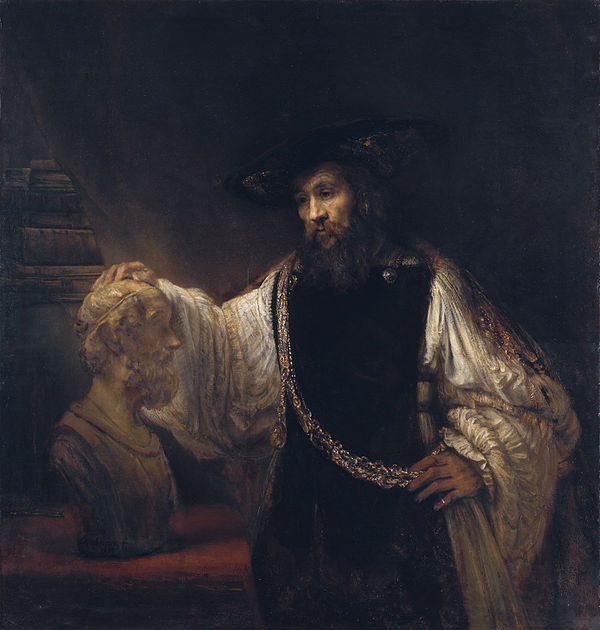The foundational truths are written into our experience. We just have to remember them.
Teleology 101: Does Nature have a “Why”?
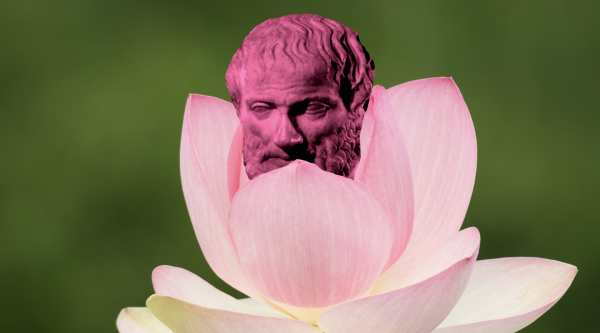
“That to secure these rights, Governments are instituted among Men, deriving their just powers from the consent of the governed,—That when any Form of Government becomes destructive of these ends, it is the Right of the People to alter or abolish it…”
—Declaration of Independence
“In the Declaration, rights are replaced by ends; Locke is replaced by Aristotle.”
—Harry V. Jaffa
“18 years have passed since airplanes took aim and brought down the World Trade Center.”
—New York Times, 9/11/19
When the early 20th-century critics of the founding redefined the theory and practice of American constitutionalism, they did so in the name of History and Progress. They believed they were dispensing with an outmoded concept of nature as the ground of justice or virtue.
According to these critics, the Framers’ notion of nature as a guide (or worse, inflexible standard) of human conduct was really just a superstitious limit on man’s freedom. Modern science, they asserted, has taught us how to manipulate nature through technology, while our new understanding of the historical process has revealed that nothing, and certainly nothing in morality or politics, is permanently true.
Those who would understand, let alone defend, the Framers’ idea of nature face two hurdles.
First there is the need to resist or overcome the seduction of moral and technological progress. That is a challenge for another essay.
Beyond this, there is the difficulty of understanding how exactly nature provides—if indeed it does provide—a ground of right, a standard for conduct, outside of human will. This is not obvious. It requires investigation on our part.
The statesmen of the American Founding—in large part because their great achievements were practical—did not always explain their theoretical premises. The founders lived before the alleged discovery of historical progress, and had the luxury of taking metaphysics for granted, at least to a greater degree than we do. The reality of human nature and the truth of moral virtue were not contested or denied as strenuously as they are today. For us, they require arguments, sometimes complicated ones.
Some of these arguments are all but forgotten. One clear sign of this is that even among those who believe they are defending the classical view of natural ends and natural right, there is disagreement or confusion. How, then, do we find what we are looking for in nature?
What is Nature?
We must begin with some common-sense observations.
The What of nature is obvious in some ways: we can point and say, “There is a river,” “This is a tree,” “That is a bird.” We name such things, as instances of a category or species, and in so doing establish the ground for rational speech, which makes politics possible.
The How is not always so clear. For much of human history, superstition, magic, and the ever-present gods explained the origins of the cosmos and the mysterious powers of the flying and creeping things of the Earth. Modern science has a much clearer understanding of the how, based on mechanical principles and well-established formulas for mass and energy, gravity and electromagnetism. There is much we do not yet understand, but the dance of the atoms is now mapped and quantified.
The Why, however, (this is what most interests us) remains a bit of a mystery. Many highly educated people are not even sure today whether this question—Why, for instance, does a robin build a nest?—is a legitimate thing to ask.
This is strange is some respects. Any child pointing to a bird alighting on a tree branch with a beak full of twigs knows that the mommy or daddy bird is a making a home for the babies. Modern science disdains such folk wisdom. The bird has no conscious intent or purpose; it is operating simply according to its instincts, they say. It makes no sense to ask “why” the bird does what it does. Nature has no goals.
When asked where such instincts came from, whether they have some end or purpose, the evolutionary biologist points to the now-familiar “millions of years of random mutation and natural selection.” This is true and valid as far it goes, and it does no good to deny the clear scientific evidence for evolution (see “Sticking with Darwin” in the fall 2019 issue of the Claremont Review of Books).
But there is more to the story.
The evolutionary biologist, if pressed, will have to admit that the robin is clearly acting for a purpose—even if not consciously or with intent. In response the evolutionary biologist may very well mutter something complicated about DNA methylation to confuse you, and then change the subject. A least that was the attitude for many years when the “Modern Synthesis” of Mendel’s genetics with Darwin’s evolution was at its dogmatic peak.
This has been changing in recent decades, as biologists recognize the absurdity of denying that living things demonstrate in their actions an impulse to preserve their “somatic integrity” and facilitate their natural development. A healthy robin does not pile a tree branch with stones, lay her eggs in the middle of a river, or feed her young indigestible dirt. Even more basically, all living things move consistently and predictably toward a mature or complete version of themselves—an acorn becomes an oak, never a tulip; no piglet grows into a tiger.
Nature is not completely random after all.
Evolutionary biologists have come to accept this obvious fact, but, being scientists, they need fancy new words like “autopoiesis” (the property of an organism’s self-maintenance) to describe it.
For the ancient philosophers, Why was not a strange question but an obvious one. The answers, however, were not then, nor are they today, altogether obvious. So the old wise men thought deeply about the most plausible explanations, as well as reflecting on the right way to think about such matters. Plato and Aristotle used the Greek word telos (which means variously end, goal, completion, intention, or a number of related ideas) to capture this notion of Why. Telos gives us the philosophical term, teleology—the study of the ends or purposes inherent in things.
For Aristotle specifically, the end or telos was a way of expressing what he called “final cause,” that for the sake of which things occur. The final is one of four causes that, Aristotle argued, capture the different means whereby things come to be. In the case of a robin’s nest, the twigs and leaves are the material cause, the shape or functional arrangement of the nest is the formal cause, and the robin’s activity in assembling it is the efficient cause. All of these are directed to the end “for the sake of which” the robin acts: the final cause or telos of having a snug, secure place to lay her eggs and produce more robins.
Like a bird, but even more elaborately, humans build things that have purposes: a house, an axe, and a statue are made of certain materials, have some shape, are put together through some work or process, and have a purpose or intention (even if the purpose is, like that of a statue, merely to be an object of beauty). Aristotle often uses such artifacts as examples to explain his four causes. But for him, it is really in living things that teleology is seen most clearly. An oak tree and a lion have a purpose in the most essential sense; a house or an axe have ends only by human contrivance, that is, artificially (by art or artifice), not naturally.
We will return to this important question of human technology, and the difference between art and nature, below.
The Primacy of Life
The final cause of a living thing is, in essence, to be complete.
One of Aristotle’s many enduringly useful and breathtakingly versatile concepts—elaborated in his Physics and Metaphysics—is the relationship between potentiality and actuality. All through nature we see latent possibilities becoming active completions: seeds become flowers, acorns grow into oak trees, gangly colts develop into majestic horses. This principle of potentiality-to-actuality fits, like a well-crafted puzzle, into his explanation of telos and causation.
All living things start out as potential versions of their complete selves and move toward actualizing that potential. This fulfillment of potential is the natural end, which in turn acts as the final cause explaining how things come to be. An example: a puppy is born and, as it develops, it moves in a clear and consistent direction toward becoming a fully grown dog. Its telos is to live the active, complete life of an adult collie or beagle.
Anything that interferes or prevents it from reaching this unfettered maturity—for instance, cruel confinement, starvation, physical abuse—denies the dog its natural end and fulfillment. Here we come to the normative or moral aspects of natural ends, which are even more pronounced in humans (as we will see in a moment). The end—the complete and active life of mature doghood—is the final cause, for the sake of which nature directs the development and growth of the puppy.
A dog leads a more complex life than an oak tree, and a human being is far more complex than either. Not surprisingly, the conditions for a complete, fulfilled, and active life for a human being are not as simple as a tree’s need for soil, water, and sunshine. Because we possess reason and speech, because we are social and political animals, and because at our highest we are capable of philosophical contemplation, human fulfillment is dependent on deliberation and choice.
Consequently, our fulfilled and consummated lives display greater natural variety than those of the lower animals and plants. The differences between a scholar, a soldier, and a statesman are more relevant to natural ends than the differences between a collie and a beagle. But the constant and invariable conditions of man’s telos, particularly in light of his political nature, are safety and happiness.
Indispensable books have been written on this topic (the Nicomachean Ethics comes to mind), and we can only touch on the most important themes here. But to return to the question of the American political regime, consider this crystalline summation by Harry Jaffa in A New Birth of Freedom (2000). After discussing Lincoln’s view of the Declaration as “the standard maxim of a free society,” Jaffa writes:
Lincoln’s conception of the standard maxim is both teleological and prudential. It is teleological because it is oriented, as is the Declaration of Independence, toward the end of human happiness, which according to Aristotle is the ultimate end of all human action, whether individual or political. It is prudential because it measures the goodness of human actions, whether individual or political, by their consequences. The consequences, in turn, are judged by whether they advance or retard happiness. Perfect happiness or perfect justice is no more to be expected, in most circumstances, than perfect health. But both individuals and people can become happier or healthier, depending on whether they act foolishly or wisely.
Nature reveals the telos of living things in the fully developed form of each organism, but never guarantees it. An oak tree can be stunted, a dog lamed, and man can miss out on happiness for innumerable reasons. But to understand what an oak is, is to know that it cannot flourish without sun and soil. And to know what a man is, Aristotle believed, is to know that he is a rational animal, capable of moral deliberation, the initiator and therefore owner of his labor; and is thus entitled to freedom simply in virtue of being a man.
To deprive a man of his life or liberty—to rule him without his consent—is to deny what a man is by nature.
Does Inanimate Matter Have Telos?
So far so good. But now we come to a difficult question. Since dogs are simpler than humans, and oak trees are simpler than dogs, why stop there? Can we be sure that only living things have a final cause by nature; or is it necessary to see the whole universe and everything in it—including inorganic matter—as having discrete ends and purposes?
This unfortunately difficult question has to be confronted, because if we can’t answer it adequately then it becomes hard to claim that teleology for living things is genuinely coherent. Strange as it may sound, the American idea of self-government is based, indirectly, on the answer to this question. If American constitutionalism is a house built with the timbers of natural rights, the foundation is formed by these metaphysical principles.
There is a certain school of thinking, especially among students of St. Thomas Aquinas (who, in turn, derived much of his philosophy from Aristotle) that argues for a version of universal, multi-tiered teleology. Among some such thinkers, phosphorus, for example, has its own final cause of being flammable; while ice exists for the sake of cooling its surroundings. These ends or final causes are not as elaborate as the final causes within living things; yet they exist nonetheless as a rudimentary version of teleology.
This claim is controversial.
For the sake of clarity we can reduce the issue to two alternative views. The universalist strand, following this interpretation of St. Thomas, attempts to give a coherent, consistent, meaningful account of the whole universe having ends or final causes. Every natural being—according to this view—from the celestial to the organic and the inorganic, has a natural final cause, ordered to the final cause of all causes (or “prime mover”).
Unsurprisingly this way of understanding Aristotle’s metaphysics supplies natural support for religious doctrines, Catholic and non-Catholic, concerning creation and the divine creator. For this school of thought, everything with a regular or predictable effect, including inanimate substances, has a final cause directing it to that outcome.
Against this view, another interpretation of Aristotle sees only living organisms as having specific ends or final causes, along with human artifacts. Inanimate objects have no natural ends. The properties or effects we see (e.g., when phosphorus ignites, or ice cools its surroundings) are not why these objects exist. But here we have a problem. According to this view, the natural universe would appear divided: man and other living beings have natural ends, but non-living beings do not. Is this a fatal dilemma?
In the Nicomachean Ethics (1139b1-4), Aristotle says that a craftsman makes something with a specific intention in mind, and his artifact has a purpose not in itself, inherently, but only in relation to how it used. What he means is that iron may have a thousand ends, limited only by man’s ingenuity. But this is the only way iron can have an end.
An axe head has a purpose only in being useful to someone. For someone too weak to use it, or for someone living in a desert where there is nothing to cut, it is just a hunk of metal. A tank of propane for a barbeque grill would be merely dangerous if left with a tribe of hunter-gatherers in the Amazon—for them, it isn’t cooking fuel, it’s an unexploded bomb.
Every human artifact is a “something” only in relation to how it is used. Therefore, precisely because the elements are almost infinitely malleable, they cannot have any single natural purpose. They can, and do, of course, contribute to the world being what it is. In that generic sense, all inanimate matter contributes to the final cause of the cosmos—which is simply to be.
Telos as Final Cause
Every material object has some property or quality, but the existence of these properties and qualities does not justify investing it with a specific natural teleology.
All material substances must have mass, volume, shape, color, density, etc. That is what it means to be matter, and so of course every element will display certain durable properties. But that is all they are: properties.
For Aristotle, plants as well as men and beasts have souls, because a soul is (in part) an “internal principle of motion.” Unlike a rock which always falls, and air which always rises, plants, animals, and humans move themselves in various self-directed ways to eat, protect themselves, grow, and reproduce (the biologists’ autopoiesis).
In this light, the supposedly fatal dualism—How can a universe can be a single reality, part of which is teleological, and part or most of which is non-teleological?—is not as problematic as it may first appear. Although only living organisms—but not simple elements or compounds—have proper, individual ends, this simply reflects the clear division that already exists between the living and non-living parts of the cosmos.
If the universe is already divided between ensouled and non-ensouled substances, it does not seem especially awkward to see the same division with regard to natural teleology: living beings have inherent ends, and inorganic matter does not.
Moreover, the simple elements and compounds do partake in a common, generic purpose: by being what they are, and having the various properties they have (light, heavy, fluid, solid, etc.) they contribute to the universe being the way it is—with all its variety and complex activity. If God’s purpose for the world is simply that it should be what it is, this does not pose any conflict with Aristotle’s doctrine of teleology.
The only caveat is that we have to resist the temptation to start imposing human preferences on the things we find beneficial or interesting. Just because we use ice to chill our diet soda does not entitle us to say that is why ice exists.
A lion, unlike ice, has a unique purpose—toward which it moves under the direction of its soul—entirely separate from human desires.
This Too Shall Pass Away
Another powerful objection to natural teleology concerns that sad but inevitable moment when soul and body part. Certain critics of natural teleology argue that the only certain end of all life is death. If death is the true telos, then natural ends can’t tell us anything about what is right, or just, or what human happiness entails. Death is meaningless, and so nature simply points to nihilism or nothingness, according to this objection.
Aristotle’s answer is that death is not the telos because it doesn’t explain anything; or at least not enough. Here again we see the importance of understanding the natural end as cause.
Death doesn’t explain an organism’s development and growth: its fullness and maturity does. A lion cub moves, by its nature, toward its complete fulfillment as a mature adult. Its potential develops into actualization by completely expressing the energetic life of lion-ness—its proper end. That explains why it behaves as it does, how it acts to become what its nature propels it toward.
Death comes as a necessary eventuality for all living things, because all material substances eventually corrupt and decay. That is a fact of life, so to speak. But that this is a necessary terminus of all organisms doesn’t make it an adequate explanation of living things. Again, only the complete fulfillment of an organism’s potential—the fully active life of lion-ness—provides an adequate explanation for what a lion is and thus serves as the final cause, in a way death does not.
This shows us again the difficulty with ascribing final cause to things like iron or hydrogen which have neither life nor death. Simple elements and compounds utterly lack this dynamic capacity. Left to itself, iron just sits there; sometimes it rusts.
Beating the Inanimate Horse
Why is this extended refutation of teleology for simple material substances necessary? Because modern science is the religion of our time. The undeniable practical achievements of technology—which operates on strictly mechanistic principles—give it almost unquestioned authority and legitimacy.
But the partial return to sobriety of mainstream evolutionary biology shows that this scientific orthodoxy is able to tolerate some discussion of “the meaning of life,” “moral values,” etc., so long as these are kept strictly separated from scientific claims. Any direct challenge to technological materialism and mechanical causation with regard to inanimate matter, however, will be dismissed out of hand. The suggestion that iron and hydrogen are imbued by nature with “inherent purposes” will only be seen as the anti-scientific delusions of a religious fanatic.
It is possible, however to challenge modern scientism by defending the truth of moral responsibility for humans as agents of conscious and deliberate acts. Ordinary citizens still resist the idea that mechanistic determinism can be applied to human behavior. We are more than “colliding billiard balls,” to use the standard metaphor.
Thus, the third epigraph to this essay. According to the New York Times, the terrorist attacks of 9/11 were perpetrated by airplanes, which “took aim” at the World Trade Center—as if airplanes have moral agency. This is the ground on which Aristotle can be used against modern scientific determinism. The argument for the natural teleology of living things goes hand in hand with the recognition of man, and only man (among the creatures of the earth), as a rational being with moral responsibility.
To see a human being clearly is to see him as a particular being with a fixed nature and inherent potential, directed toward a natural end that is achieved, at its peak, through a fully actualized life of happiness. Though the end is enduring, the necessary conditions for achieving this telos are subject to contingency and uncertainty—including especially our own habits, education, and choices. A teleology of specific and unique ends is limited to organisms, because only living beings are driven by an innate impulse to develop their potentiality into actuality, only they contain an internal principle of motion (the soul) that allows them to grow toward their proper end, and only beings with souls have at once a direction and a cause of their own natural fulfillment.
The American Mind presents a range of perspectives. Views are writers’ own and do not necessarily represent those of The Claremont Institute.
The American Mind is a publication of the Claremont Institute, a non-profit 501(c)(3) organization, dedicated to restoring the principles of the American Founding to their rightful, preeminent authority in our national life. Interested in supporting our work? Gifts to the Claremont Institute are tax-deductible.
Notes on nature’s means to nature’s ends.
What is the Bedrock of Being? (A Reply to Alex Priou.)
Must the natural scientist become a political philosopher?
A Response to Glenn Ellmers and J. Eric Wise
What If Rights Have Gone Extinct?

